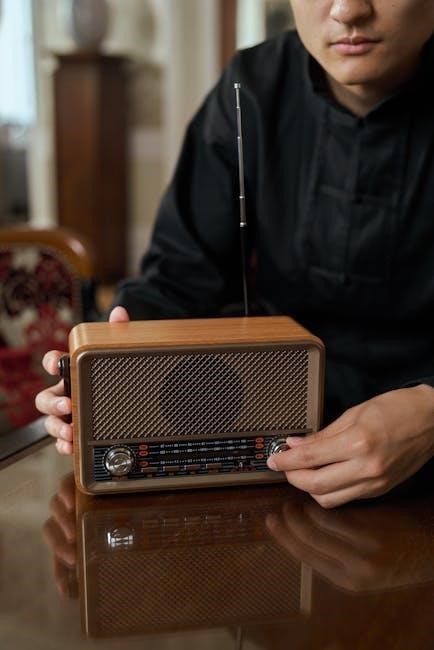
Venmar Wall Control Manual PDF: An Overview
Venmar wall control manuals, readily available in PDF format, offer
comprehensive guidance. These manuals cover installation, operation, and
troubleshooting. They ensure homeowners can effectively utilize Venmar
ventilation systems for optimal indoor air quality,refer to
www.venmar.ca for auxiliary wall controls.
Understanding Venmar Wall Controls
Venmar wall controls are integral to managing residential ventilation
units, offering user-friendly interfaces designed to maximize the benefits
of these systems. Created with homeowners in mind, these controls address
specific needs and preferences, ensuring optimal indoor air quality. They
come in various models, each tailored for different applications and
offering unique features. The N series, for example, is known for its
modern, stylish design, appealing to both homeowners and installers.
Venmar AVS wall controls are designed for ease of use, allowing users
to adjust air supply and humidity levels. Models like the Deco-Touch offer
advanced functionalities, including automatic control options and
pre-set modes. Understanding the specific functions of your Venmar wall
control is crucial for effective operation and maintenance. Always refer
to the installation and user guide for detailed information.

Compatibility of Venmar Wall Controls with Ventilation Units
Venmar wall controls boast broad compatibility across various ventilation
units, including AVS Solo, Duo, HE, Compact, and Constructo 1.0. Vanee
Gold Series, HE, 60H, HRV ERV 90H-V ECM, Novo, and Vigör HRV Plus are also compatible.
Venmar AVS Solo, Duo, HE, Compact, Constructo 1.0
The Venmar AVS Solo, Duo, HE, Compact, and Constructo 1.0 ventilation
units are designed for optimal performance with specific wall controls. The
Deco-Touch wall control, detailed in its installation and owner’s guide, is
compatible with these units. These wall controls are user-friendly, created
for people who want to maximise the benefits of their residential ventilation
unit.
Homeowners can fulfill their specific needs with Venmar AVS wall controls.
When installing the wall control, ensure proper electrical connections to
the unit’s terminal connector. Refer to the ventilation unit’s installation
manual for detailed instructions and wiring diagrams to avoid miswiring.
Remember to keep control low voltage wiring away from motors and lighting.
Vanee Gold Series, HE, 60H, HRV ERV 90H-V ECM, Novo, Vigör HRV Plus
The Vanee Gold Series, including HE, 60H, HRV ERV 90H-V ECM, Novo, and Vigör
HRV Plus models, are compatible with various Venmar wall controls, including
the Deco-Touch. These units ensure optimal indoor air quality when paired
with the correct control. Always refer to the installation and user guide
for specific instructions.
For proper operation, ensure the wall control is correctly installed and
connected. The Deco-Touch wall control allows users to adjust air supply
and select desired humidity levels. Utilize the push buttons to select the
appropriate speed. For detailed information about auxiliary wall controls,
consult the installation and user guide available online.

Installation Guide for Venmar Wall Controls
Installing Venmar wall controls requires careful attention to wiring and
placement. Consult the specific installation manual. Ensure proper electrical
connections. Mount the control securely to the wall for optimal performance
and accessibility.
Electrical Connections and Wiring
Proper electrical connections are critical for the reliable operation of
Venmar wall controls. Always disconnect power to the ventilation unit before
commencing any wiring work. Refer to the wiring diagram in the installation
manual to ensure correct connections. Typically, Venmar wall controls utilize
low-voltage wiring (AWG 14/2 or AWG 14/3). Maintain at least 1 foot (305 mm)
separation between low-voltage control wiring and sources of electrical
interference, such as motors, lighting ballasts, and power distribution
panels, to avoid erratic operation. Never install more than one main wall
control per ventilation unit. To avoid miswiring, carefully match wire colors
to the corresponding terminals. Secure all connections firmly. Auxiliary wall
controls require a 4-wire connection to the unit. Ensure compliance with all
applicable electrical codes and regulations. Improper wiring can lead to
malfunctions or damage to the control or ventilation unit.
Mounting the Control to the Wall
Properly mounting the Venmar wall control ensures accessibility and prevents
damage. Select a suitable location on an interior wall, away from direct
sunlight or sources of moisture. Ensure the wall surface is clean and dry.
Use appropriate mounting hardware, such as screws and wall anchors, to
securely attach the control. Position the control at a comfortable viewing
height, typically around eye level. Before drilling any holes, check for
hidden wiring or plumbing. If replacing an existing control, use the existing
mounting holes if possible. Ensure the control is level and flush against
the wall. Avoid overtightening the mounting screws, which could damage the
control housing. After mounting, test the control to ensure it functions
correctly. Refer to the installation manual for specific mounting
instructions and diagrams. Some models may require removing a screw on the
underside of the control before mounting.

Operating Modes and Features
Venmar wall controls offer various operating modes like Min, Max, and
Intermittent speeds for air supply. Some models include recirculation mode.
These features optimize ventilation based on user preferences and indoor air
quality requirements.
Air Supply Control: Min, Max, and Intermittent Speeds
Venmar wall controls provide precise air supply management through Min,
Max, and Intermittent speed settings. Selecting “Min” ensures continuous, low-level
ventilation, ideal for maintaining consistent air quality. “Max” delivers
high-speed ventilation, suitable for quickly removing pollutants or humidity.
Intermittent speed alternates between on and off cycles, balancing
ventilation with energy conservation.
The user can select the appropriate speed using a push-button control.
Venmar AVS wall controls are designed for user-friendly operation, allowing
homeowners to easily adjust settings to meet their specific needs. The
Altitude wall control, for instance, offers advanced features, while other
models provide basic controls for simple adjustments. These controls maximize
the benefits of residential ventilation units, ensuring optimal indoor air
quality and comfort. NOTE 1: Wall control including configurable low
speed recirculation in intermittent mode.
Recirculation Mode
Venmar wall controls often feature a recirculation mode, which halts air
exchange with the outdoors. Instead, it recirculates indoor air at high
speed. This mode is useful for specific situations, such as reducing the
spread of airborne particles during cleaning or quickly distributing heated
or cooled air throughout the house.
During recirculation, the unit temporarily functions as an air circulator
rather than a ventilator. This can help maintain a consistent temperature
and minimize energy loss. The recirculation mode is typically activated by a
dedicated button on the wall control. It’s essential to note that while
recirculation is beneficial in certain scenarios, prolonged use without
outdoor air exchange can negatively impact indoor air quality. Therefore,
it’s recommended to use this mode judiciously and ensure regular ventilation
to maintain a healthy indoor environment.

Troubleshooting and Maintenance
Maintaining Venmar wall controls involves simple checks. Refer to the PDF
manual for troubleshooting erratic operation. Ensure proper wiring and
avoid interference from other electrical devices to prevent issues and ensure
consistent performance.
Avoiding Erratic Operation
To prevent erratic operation of your Venmar wall control and ventilation
unit, several key precautions must be observed. First and foremost, never
install more than one main wall control per ventilation unit. This
configuration can lead to conflicts and unpredictable behavior.
Ensure that the low voltage wiring for the control is kept at least one foot
(305 mm) away from potential sources of interference, such as motors,
lighting ballasts, light dimming circuits, and power distribution panels.
Proximity to these devices can cause signal disruption and erratic
performance.
Consult the installation manual for detailed wiring diagrams and instructions
to prevent miswiring. Proper electrical connections are crucial for stable
operation. If issues persist,refer to Venmar‘s website for
troubleshooting guides.